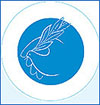 |
|
 |
 |
|
|
Monkey Matters

|
Monkey
Matters
Intrepid
young environmentalist Sahir Doshi takes you through India, telling you all
about macaques and the injustice being meted out to
them
YOU'VE probably seen
them running across the road, eating wafers from packets stolen from roadside
shops or prancing around mischievously. Though you may pass them off as 'just
another monkey', they are most likely macaques. Often, these are caught young
and their mothers are killed in their attempts to foil the capture. The baby
monkeys' noses are hooked and they are then tortured into learn dancing to the
'damru' or 'dholak' and perform pranks.
With wastelands and
agricultural lands shrinking, the macaques, being mostly leaf eaters, have
slowly made their way into gardens and wooded residential areas and have
started picking on food thrown away by people. Mushrooming apartments and
houses along the city's periphery have robbed the monkeys of their habitat,
forcing them to scavenge for food in the
city.
Know
Your Macaque
Macaques are
generally considered terrestrial although they like to sleep up in trees. They
are more active in the early morning and late afternoon - when it's cool. Males
are bigger and heavier than females, have well-developed canines and are not as
colourful as other monkeys. Macaques eat mainly fruit; but now they eat whatever
is available - flowers, insects, eggs and perhaps some meat. Crab-eating
macaques hunt crabs and eat any other marine life they can catch. To complement
their varied diets, macaques have simple stomachs.
They also have
well-developed cheek pouches, some are so large and extend down the neck that
the pouches can contain the same amount of food as their stomachs! Macaques are
stoutly built with strong limbs. They are dexterous with fully opposable thumbs.
They move on all fours. Some have virtually no tails (lion-tailed macaque,
Barbary ape), while others have long tails.
|
Stop
The Atrocities
Macaques are a
favourite laboratory test animal. The Rhesus macaques are in danger because they
are caught in large numbers and used in laboratory tests. Scientists and
students of science conduct all kinds of cruel and painful experiments on these
monkeys just to see how they react to medicines and chemicals. Some of these
experiments are made as part of application for scholarships! Tests on the
Rhesus macaque resulted in the discovery of the Rh (rhesus) factor in 1940. This
is a hereditary blood
antigen.
When Rh and non-Rh
blood are mixed during blood transfusions, fatal reactions can occur. The
crab-eating macaque was the clinical test animal for the development of the
polio vaccine. There are two to three million crab-eating macaques in the wild,
but even they are threatened by habitat loss and persecution by humans. Others
are fewer in number and more seriously threatened. The most seriously threatened
and rarest is the lion-tailed macaque. This creature is black-faced, long
snouted, golden maned, golden tailed and
red-eyed.
What
You Can Do
Protect these poor
beings as they not only help in the dispersal of seeds but also are very
important in biodiversity cycles. Just give these primates the space they need.
Only a close link between nature conservation and sustainable development will
ensure healthy primate numbers in the future.
Stop watching
monkey-dances
Start writing
letters against pollution, the hydro-electrical projects in national parks and
illegal logging
We will be able
to save the macaque family if we all join hands in allowing these animals to
live in peace.
For more
information and to know how you can participate in saving Macaques, write
to:
Nature's Beckon,
Ward No.1, Datta
Bari,
Dhubri - 783301 Assam.
Tel: 03662
31067
Or write to Mr Sudipto
Chatterjee at WWF India bhcp@wwfindia.net or call on 011
24621123
|
|
 |
|
|
|
| Don't wait for evolution. Get |
 |
with
|
 |
 COMMENTS ON THIS ARTICLE COMMENTS ON THIS ARTICLE |
 |
 No comment has been posted for this article yet. No comment has been posted for this article yet.
|
|
|
|
|
 |
|
|
|
Ponds Femina
Miss India 2005
|
|
Indiatimes
Women
|
 Mahavir-Mahatma
Awards
Oneness
Forum launched How to
join |
|
|
|
Indiatimes
Modelwatch  a aClick to view
more  |
|
|



